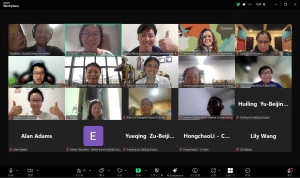Recently, the State Council issued the Opinions on Strengthening Environmental Zoning Control, encompassing six main sections: overall requirements, comprehensive advancement of environmental zoning control, promoting high-quality economic and social development, implementing high-level ecological environmental protection, strengthening supervision and assessment, and organizing support.
Environmental zoning control aims to safeguard nature and improve environmental quality through targeted management. It’s based on the “Three Lines and One List” initiative, which sets ecological protection redlines, environmental quality baselines, resource utilization limits, and ecological access rules.
What is Environmental Zoning Control?
It involves managing different areas differently to protect nature and improve the environment. This includes setting boundaries for areas that require special protection, determining limits for pollution and resource use, and creating rules for activities in specific locations.
Who Makes the Plans?
Plans are developed by local governments in accordance with national guidelines. They’re then reviewed and approved by higher-level environmental authorities before implementation.
How are Plans Developed?
Plans categorize areas into three types: priority protection areas, where nature requires extra care; key control areas, where environmental issues are significant; and general areas, which requires less attention. Plans must also need to align with national land use plans and local development objectives.
Can Plans Change?
While plans are intended to remain unchanged for five years, adjustments can be made if necessary. Any modifications must be based on thorough analysis and approved by environmental authorities.
How to Use the Plans?
- Focus on developing the Yangtze River Economic Belt by effectively controlling and managing specific areas. Prevent the relocation of polluting industries to the upper and middle reaches of the river.
- Implement strategies for ecological protection and high-quality development in the Yellow River basin. Tailor management approaches to different regions to promote green and low-carbon industries.
- Apply zoning and control measures in the Beijing-Tianjin-Hebei region, Yangtze River Delta, and Guangdong-Hong Kong-Macao Greater Bay Area. Encourage the transformation of traditional industries to environmentally friendly practices and support the strategic placement of emerging industries.
- Enhance the Management of key areas, promoting the green transformation of industries such as petrochemicals, steel, and building materials. Guide these industries to relocate to regions with better environmental capacities and market conditions.
- Improve the management of priority conservation areas. Explore methods to realize the value of ecological products and enhance carbon sequestration capacity while ensuring ecosystem diversity and stability.
- Implement zoning and control measures to manage water, air, soil, and noise pollution. Address environmental challenges, mitigate risks, and create opportunities for high-quality development.



